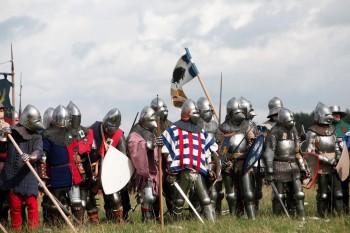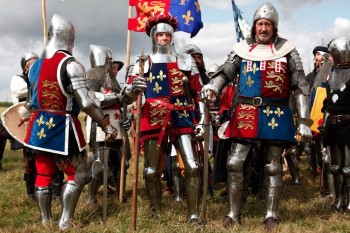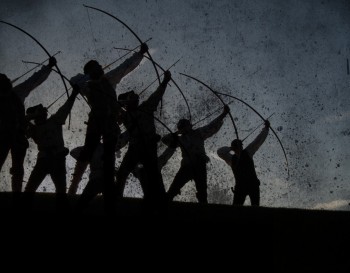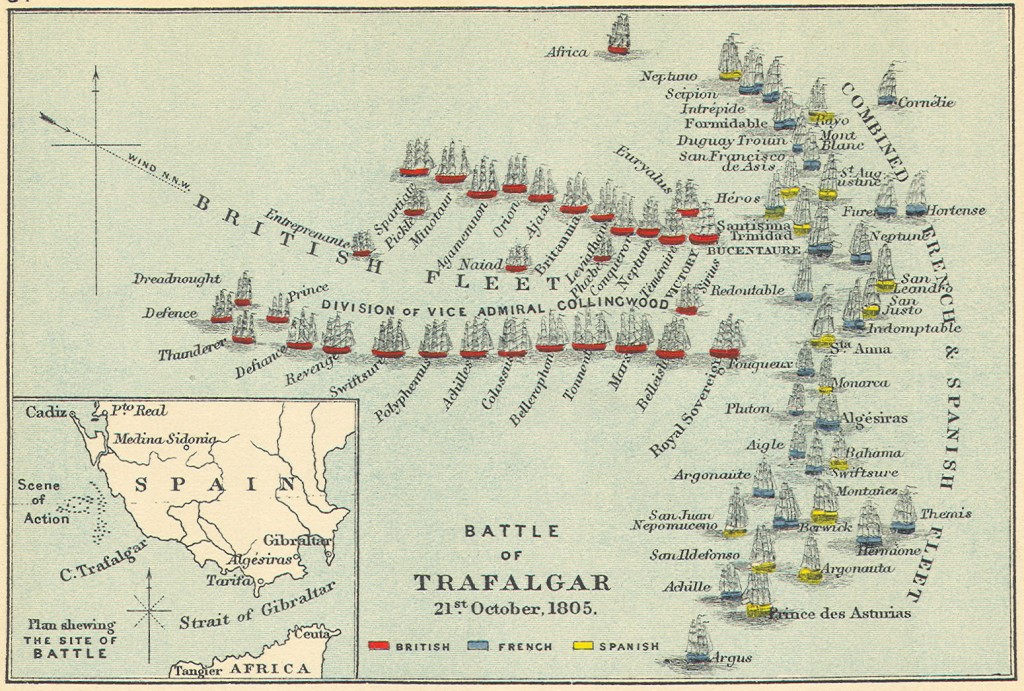We are developing the social individualist meta-context for the future. From the very serious to the extremely frivolous... lets see what is on the mind of the Samizdata people.
Samizdata, derived from Samizdat /n. - a system of clandestine publication of banned literature in the USSR [Russ.,= self-publishing house]
|
So, as I regularly do, I read a recent posting at Mick Hartley, which is about what nutters the rulers of Saudi Arabians are, spreading the theology of bedlam and then griping when people do what the theology says, and all the while blaming the Jews for their own ridiculousness.
And then I read this comment underneath that posting, from someone called “Graham”:
Ironically, it’s the Israeli-Saudi alliance behind the QSD that’s defeating ISIS.
QSD? Quesque c’est?
I found my way to this piece (I love the internet):
These are Kurds, Muslim Arabs, Turkmens, and Syriac Christians. …
… which, to me: sounds good, sounds bad, sounds don’t-know, and sounds good …
… About two weeks after this EXTREMELY disparate group was created, it launched the most successful series of offensives in the entire five-year Syrian civil war. The US immediately began arming the QSD, and the Turks suddenly stopped complaining that the Kurds in this new army were up to no good.
This guy goes on to say (I think) that the “Muslim Arabs” are Tunisian special forces, the Tunisians having become very pissed off with ISIS for having recently destroyed their tourist industry. So those Muslim Arabs sound semi-sane, or as semi-sane as Arabs ever are.
And I also found my way to this piece of Kurdish Daily News (Kurdish Daily News, to me, sounds good) which says:
Syrian Democratic Forces (QSD) has released a six-day balance sheet of the operation they launched against ISIS gangs in the rural areas of south Hesekê on October 31.
During the first six days of the operation, an area of 350 square kilometers has been cleared of ISIS gangs; which involves 36 villages, 10 hamlets, 2 gas factories, 3 quarry areas and some guard posts near the borderline.
The operation has thus far left 196 members of the gangs dead, 99 of whom were killed by QSD forces and 79 as a result of airstrikes by jets of the international coalition.
Part of my daily reading these days consists of Instapundit, and people linked to by Instapundit, telling me that the Middle East is going totally to hell, and that US Middle East policy now has no redeeming features at all. But I am unpersuaded that the answer to the Middle East’s many problems is for the Middle East to be totally conquered and then micro-managed by the USA, with everyone else just standing around and either waiting for their chance and getting it, or else hoping for the best and not getting it. US policy now seems to have been to back off, wait for some Good Guys to emerge out of the mess, and then when they eventually did, to back them with a few guns and a few missiles and a few airstrikes, but not with a huge US army stomping about making friends-that-are (and then abandoning them following an election) or friends-that-aren’t and enemies-that-are, and generally crowding out the best local answers. Is that – “leading from behind” (i.e. not actually leading at all) – such a very terrible idea? It sounds like a rather better idea than earlier ideas have been. Whether President Obama started out wanted that policy, I really do not know, but that now seems to be what is happening.
This more recent posting at Mick Hartley says that if QSD beats ISIL, the big winner could end up being al-Qaida. But might not QSD first defeat ISIL, and then might not QSD, or something closely related to or descended from QSD, then turn on al-Qaida and defeat al-Qaida also?
But what the hell do I know? Comments anyone?
“On November 21, Iran conducted its second test of a nuclear-capable ballistic missile in direct contravention of two U.N. Security Council prohibitions, including one that incorporates the current nuclear agreement — which bans such tests for eight years.”
– From National Review.
Another report via Reuters
Can anyone be in serious doubt that the deal between the US/EU and Iran to lift sanctions against the latter over Iran’s supposed co-operation over being good on nuclear tests is a crock? Another blinding result for Mr Obama’s foreign policy. We have another year of this man in the White House.
In late 1915 steel helmets were introduced on the Western Front.
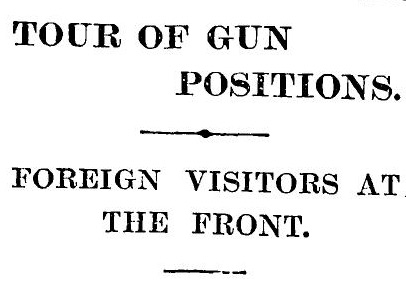 The Times 8 November 1915 p7 They were not, as The Times correspondent claims, there to protect the wearer from rifle or machine-gun bullets. Indeed, as I understand it, even modern helmets are not always proof against high-velocity rounds. What they were there to do was to protect soldiers from shrapnel. Shrapnel, in case you didn’t already know, is the collective noun for steel balls being expelled from an air-bursting (or Shrapnel) shell. It was a huge killer in the First World War and the steel helmet did a great deal to save lives.
One of the good things about the Brodie helmet – as it sometimes known – is that it had an internal harness. This meant that if the helmet was dented the dent was not necessarily reproduced in the wearer’s skull.
On the shape, however, with a wide brim and no neck protection, I have always been in two minds. On the one hand, if the threat is from above you would have thought the shape was a good thing as it covers a large part of the wearer’s body. It is also easy to make. On the other hand, British helmets over the last 100 years have progressively given more neck protection which sounds like the British Army’s way of saying they got it wrong.
By the way, in my limited experience both steel and more modern Kevlar helmets are a pain in the arse to wear. You either can’t see anything from a prone position or you can’t see anything from a prone position and get a headache.
This was one of many changes to frontline equipment during the course of the war. Others included the introduction of the Mills bomb, the Lewis gun and the Stokes mortar.
The shooting down of a Russian military aircraft, by Turkey, allegedly after it passed into a sliver of Turkish airspace during a mission over northern Syria might well be an isolated incident, like Gadaffi’s clashes with the US Navy over the Gulf of Sidra in the 1980s. For me, I hear an ironic but distorted echo of the shooting down of the Korean Air flight 007 by the Soviets in 1983, when it was 90 seconds from international airspace after passing briefly through Soviet airspace, but that was a civil flight and a clear case of Soviet mass murder.
Whatever happened may not become clear, but why it happened is for now, even murkier.
Was it a ‘gambit’, like a pawn sacrifice (the eternal lot of the military) in chess to gain a strategic advantage, a pretext to escalate the situation or to force others hands?
Was the shooting down a provocation by a resurgent Erdogan, confident in his election victory, expecting to shield from Russia behind NATO?
Was it Russian testing of Turkish resolve, or vice versa?
Did both sides hope for a crisis too good to waste?
Is Russia hoping to drive a wedge between Turkey and the rest of NATO, expecting the wetter elements to take fright and use the ‘Polish veto’ of NATO?
Is Russia hoping for a prolonged spike in the oil price to boost its economy, and distract the hard-pressed masses from their troubles and toils?
Or was it just a trigger-happy pilot?
And what would be the best outcome for the West from this tragedy?
The upshot of the Syrian refugee crisis, and the recent terrorist attacks in Paris almost seems as they were 1960s KGB/GRU operations designed to sow discord within Europe and to set countries against each other and élites against the people, with Putin having dusted down an old plan and re-worked it. But is that not over-complicating matters?
I doubt that many realise that it was on 11th November 1940 that the Fleet Air Arm of the Royal Navy struck a blow at Royal Fascist Italy’s Navy that may well have slowed the march of the Axis powers in the Mediterranean and marked the first check on their advance after the fall of France. The operation, called ‘Operation Judgment‘, involved two waves of Fairey Swordfish biplanes (almost certainly the slowest surprise air attack of WW2 apart perhaps from the springing of Mussolini) attacking the Italian fleet at Taranto harbour on the ‘heel’ of Italy. The outcome was that the Italian surface fleet was severely reduced in capability, and the remnants moved further up the peninsula to Naples, thereby limiting their capability to interfere with British shipping in the Mediterranean and to re-inforce North Africa. British casualties were 2 aircraft lost, 2 men killed, 2 PoWs. The Italians lost one battleship, and had 2 battleships and 2 cruisers heavily damaged.
The raid had been planned for Trafalgar Day, 21st October, but was put back due to a fire, fittingly enough to Armistice Day. A Swordfish also went on to cripple the Bismarck, and later in the War they accounted for 22 U-boats. Not a bad record at all.
It has been speculated that this raid inspired the Japanese to use air power at Pearl Harbor, but perhaps emboldened would be a better term, after all, it is not as if Japan wasn’t gearing up for something by this time. The anniversary of the raid has attracted some comment, a piece here in the American Thinker (an organ of which I know little), but pointing out that it actually makes sense to attack your enemies, not to wait for them to attack you. I particularly liked this part:
Third, fight to win, and winning means destroying the power of those who hate us. Had the Second World War been, instead of a continuous struggle, a series of peace talks and ceasefires and diplomatic pussyfooting, it is certain that Hitler would never have lost. Democracies naturally loathe war and yearn for peace, but evil regimes who control their subject peoples can maintain war fever indefinitely.
You might think that that author had some people from the present-day in mind.
And for those brave men of the Fleet Air Arm, flying in open cockpits at night against a major enemy harbour, I shall raise a glass of prosecco tonight, to sink something Italian.
If Russia’s defense ministry really does believe that all the missiles found their intended targets, those sheep must have been up to something
– Dave Majumdar & John Allen Gay
British jihadis are killed by drone strike ordered by the PM
The revelation that Khan, 21, from Cardiff, had been assassinated in the first RAF drone strike against a Briton triggered claims of extra-judicial killing. But Mr Cameron insisted the attacks were an act of self-defence
How say you?
Trevor Dupuy was a US soldier and a military historian who took a statistical approach to evaluating combat performance. He paid particular attention to casualty statistics. Casualties – in case you did not know – include deaths but also include wounded, missing and captured. They answer the general’s question: how many men do I have who are able to fight?
Of course, statistics aren’t everything. For instance, the North Vietnamese took vastly more casualties in the Vietnam War than the Americans but they still won. But all things being equal, being able to kill more of your enemy than he can kill of you is a good thing to be able to do.
In A Genius for War Dupuy enquired into the nature of the German army. He found that the statistics told a remarkable story: the German army was very good and had been for a long time. From the Franco-Prussian War to the Second World War the Germans were consistently better at killing the enemy than the enemy were at killing them.
Now you may be thinking that such comparisons might be skewed due to the Russians and Dupuy found that that the Russians were indeed every bit as bad as you might think. But even when he removed the Russian numbers Dupuy found that the Germans still held a clear and consistent superiority over the French, British and Americans. This superiority existed regardless of whether the engagement was offensive or defensive.
Chauvinists might be surprised to learn that there seems to have been no great difference between the western allies. French and British performance was more or less equal in the First World War. British and American performance was more or less equal in the second. The Americans in the First World War and the French in the Second are special cases.
Having satisfied himself that the German army was indeed superior, Dupuy asked why this was. His key finding was that there seemed to be nothing inherent in being German. Dupuy found a number of historical examples where the Germans proved to be anything but good fighters. These included largely-German units in the American War of Independence and various battles between German mercenaries and the Swiss.
So, if being German didn’t make you a good soldier what did? Dupuy’s theory was that it was all due to the German General staff. So what was so good about the General Staff? Dupuy listed several criteria. These included selection by examination, historical study and objective analysis. In other words it was an institution that thought seriously about war.
The doctrine that all this thinking led to might be summed up as bold plans tempered with flexibility. Perhaps the best-known example of bold planning was the invasion of France in 1940. No one on the allied side thought a tank-led thrust through the Ardennes was possible. But it was and France collapsed soon afterwards.
As many of you will know far from being an official General Staff masterplan the invasion of France was in fact dreamt up by Erich von Manstein in opposition to his superiors. But Manstein was still every inch the General Staffer.
Flexibility was also important. Contrary to the stereotype the German army did not want blind obedience. Not only did it allow subordinate commanders to figure out how to achieve their objectives but if opportunities arose which were unforeseen they were not only allowed to take advantage of them but expected to do so. “His majesty made you a major because he believed that you would know when not to obey his orders.” as Prince Frederick Charles put it.
I would like to thank Perry de Havilland for pointing me in the direction of Dupuy and his works.
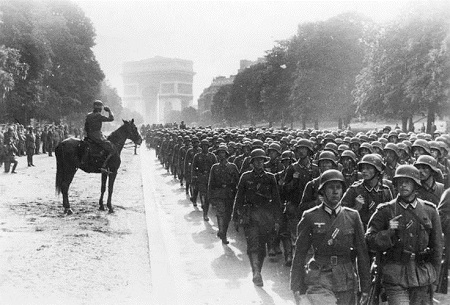 What swots can do
In my recent post on rent control, I quoted approvingly a comment from someone who said he had come round to our point of view on the harmfulness of rent control while still claiming to be a lefty. “You are not there yet, my friend,” I murmured. “But does not every journey begin with one step? Let us encourage this partial recantation, that it may be reproduced.” Perry de Havilland took a less tolerant view, while still encouraging reproduction. Niall Kilmartin took the middle road:
The naive young lefty, partly idealistic and partly enjoying the ego rush of being the good guy fighting the bad guys, gets successive hints from reality as they grow older. Over time, the accumulating hints force a choice: the idealism _or_ the ego rush; it can no longer be both. The more they shouted their hatred of the bad guys when they were young, the more dubious deeds they did “for the cause”, the harder it is for them to choose the idealism rather than the ego rush (as some college professors well know when they make activism part of the curriculum), but becoming “an apostate” is emotionally hard in any case. It can be a slow process. It can take years. From Robert Conquest to Thomas Sowell, some quite effective people were marxists when they were youngsters. So I’m sufficiently with Natalie to say that signs of doubt should not be discouraged (though I do understand why actual encouragement of those who are still fighting to retain their ego rush even as they admit doubt can sometimes stick in the throat).
If it sticks in the throat to welcome an incompletely-converted convert from an opinion we oppose, how much more so when the defector has joined and then abandoned a literal enemy.
Mother of five begs for rescue from Isis
THE British wife of an Isis fighter stranded in Syria with her five children is appealing for help to return home to Manchester.
In a video passed to The Sunday Times, Shukee Begum, who is of Bangladeshi origin, is heard repudiating Isis as “not Islamic” and telling how she had spent 10 months with her young children in the northern Syrian town of al-Bab, where she taught English to the children of foreign fighters.
She said the final straw was when the US-led coalition bombed the house where they were living, killing seven Isis commanders and members of their families.
While her husband, Muftah el-Deen, was away fighting, she escaped and was given shelter by members of the Free Syrian Army (FSA), a moderate group opposed to Isis.
Begum, filmed with her three girls and two boys on what appears to be a low-quality video phone, said she left Britain and was smuggled through Turkey into Syria late last year. She claimed her aim was to persuade Deen, who had joined Isis three months earlier, to come home.
This view is typical of the most popular comments to the story:
She ran off with five children to join her jihadi husband and now she says ISIS / Daesh are not Islamic? I might have a bit of sympathy if she said she completely rejected this cult of death, but she’s just saying that now she believes that sadistic slaughter, beheading and crucifixion is going a bit too far.
She wants to come back “home” and no doubt be quite Islamic, but eschew the mindless slaughter of unbelievers. Why should we believe a single word she says?
To which my reply would be that answering exactly that question is the job of the intelligence services to whom this lady will sing like a bird as a condition of being allowed to return. I hope and trust it does work that way and the local consular staff haven’t gone completely softheaded. We want defections and should make them easy but not cheap. It is painful to see crimes go unpunished – and I consider joining a group that boasts of its murders, enslavements and rapes to be a crime in itself – but renegades can help to stop the murders, enslavements and rapes, not to mention prevent the attacks here in the West that ISIS has promised. We have long allowed known criminals to turn Queen’s evidence / State’s evidence for very similar reasons. And her children are innocent.
Between 1945 and about 1965, atom bombs and then hydrogen bombs were devised and demonstrated by the two biggest Great Powers, and then manufactured and attached to rockets in sufficient numbers to cause any all-out war between these two superpowers very probably to be a catastrophic defeat for both, to say nothing of being a similar catastrophe for all other humans, within a few hours. This new kind of destructive power also spread to a small club of lesser Great Powers.
This did not happen overnight. It didn’t all come about in 1945. But it happened pretty quickly, historically in the blink of an eye. It changed the world from a place in which Great Wars between Great Powers had to be prepared for, at all costs, to a place in which Great Wars between Great Powers had to be avoided, again, at all costs. That is a very big change.
I do not assert that all wars have ended. Clearly they have not, as one glance through a newspaper or news website will tell you. Small powers still have small wars, and Great Powers regularly join in, in small ways. Sometimes, Great Powers start small wars, like the one in the Ukraine now. But even these small wars have been getting less numerous and smaller in recent decades. Small wars can get big, so even small wars are now discouraged by Great Powers.
Nor do I assert that all preparations for war by Great Powers have ceased, or that they should. But more than ever, the purpose of such preparations is to enable mere confrontations to be emerged from victoriously or failing that satisfactorily, rather than for such preparations – such weapons – constantly to be “used”, in the sense of being fired, fought with, and so on. The purpose of weapons is to scare, as well as to win fights, and they are being “used” whenever anyone is scared by them. Great Powers will still spend lots of money on weaponry.
But what has not happened, for many decades now, and what still shows no sign of happening despite all kinds of diplomatic, ideological and financial turbulence, is an all-out fire-every-weapon-we-have war involving two or more Great – by which I of course mean nuclear – Powers. In this sense, countries like mine, and almost certainly yours too given that you are reading this, have become peaceful in a way that they have never experienced before in all of human history before 1945.
In case anyone mentions Iran, I don’t believe that Iran’s leaders want to use nuclear weapons, as in: detonate them. I think they want to scare their enemies while trying to win other, non-nuclear victories, just like any other nuclear power. I didn’t believe Chairman Mao when he played the nuclear madman either. He was just trying to scare people, and he succeeded also.
And if you want to say that like all historical trends, this one could end, because of this or that imaginable or unimaginable circumstance, then I of course agree with you. History keeps on happening. But for the time being, the trend is as I have described it. We now, still, live in an age of peace more profound than any of our ancestors have ever experienced.
There have already been many, many consequences of this historic turnaround, this Great Change, and there will surely be many more. Indeed, I would say that just about everything of importance, not just politically but in the wider culture, that has happened to the world, anywhere and everywhere, between 1945 and now, can only be understood properly if you factor in the invention of and the deployment of nuclear weapons.
Do I really mean that? Yes, I really do mean that. Indeed, I offer the world, and in particular the Samizdata commentariat, a challenge. Tell me about a change that has happened in the world in recent times, any change, to absolutely anything, and I will be able to show you, at about one or at the most two or three removes, how your particular change has been affected by this great thermonuclear transformation, this Great Change, that I have just described. Indeed, there is nothing in the entire world, I assert, that has not been affected, often very profoundly, by this Great Change. (I don’t promise actually to answer all such comment-challenges on the spot. I merely announce that if I had nothing else to do for the next week, I could. So, let’s make it a team effort. Let those of us who already understand the truth of what I am saying respond as a tag-team to those who are still unconvinced.)
Talking of team efforts, let me offer the example of sport, and in particular the inexorable rise in the importance and in the social and economic impact of professional sport, during the last clutch of decades.
→ Continue reading: From the Great Peace … to the ordeal of Adam Lyth at the Oval cricket ground
|
Who Are We? The Samizdata people are a bunch of sinister and heavily armed globalist illuminati who seek to infect the entire world with the values of personal liberty and several property. Amongst our many crimes is a sense of humour and the intermittent use of British spelling.
We are also a varied group made up of social individualists, classical liberals, whigs, libertarians, extropians, futurists, ‘Porcupines’, Karl Popper fetishists, recovering neo-conservatives, crazed Ayn Rand worshipers, over-caffeinated Virginia Postrel devotees, witty Frédéric Bastiat wannabes, cypherpunks, minarchists, kritarchists and wild-eyed anarcho-capitalists from Britain, North America, Australia and Europe.
|

